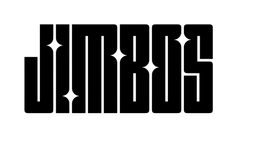Compound vs Polish: The Complete Guide to Paint Correction
Everything You Need to Know About Fixing Swirls, Scratches, and Haze
If you’re getting into paint correction, the first big question is usually: “Do I need to compound or polish?” The terms are often used interchangeably, but they’re not the same—and choosing the wrong one can mean wasted effort or even damage to your clear coat.
In this guide, we’ll break it all down: what compounds and polishes are, how they work, when to use each, and how to get pro-level results—even as a beginner.
What’s the Difference Between Compound and Polish?
A compound is a more aggressive abrasive product that removes deeper scratches, oxidation, and sanding marks. A polish is a milder product designed to refine the finish, boost gloss, and eliminate light defects like swirl marks.
Think of it like this:
- Compound = cutting (leveling paint)
- Polish = refining (perfecting finish)
Key Articles in This Series
- Paint Correction for Beginners
- Do I Need to Polish My Car Before Ceramic Coating?
- How to Choose the Right Polish
- Polishing Mistakes to Avoid
- Foam Pad vs Microfiber Pad – What’s Better for Polishing?
- Dual Action Polisher vs Rotary – What’s Best for You?
- Compound vs Polish Explained
When Should You Compound?
Use a compound when:
- You see deep scratches or heavy oxidation
- You’ve wet sanded and need to level the paint
- Your polish isn’t removing defects effectively
Just remember—compounding removes more clear coat, so it should only be used when needed.
When Should You Polish?
Polishing is the go-to for:
- Light swirls and hazing
- Final finishing after compounding
- Boosting gloss before ceramic coating
For most cars with only minor imperfections, a one-step polish will give you everything you need.
Want to Save Time? Use a One-Step Polish
Instead of using two separate products, you can cut and finish in one step with Picture Perfect Polish.
It’s pad-dependent, meaning it can act as a heavier cut with a cutting pad—or finish flawlessly with a softer pad. Great for professionals and beginners alike.
Pro Tip: Always Test a Small Section First
Before committing to a full correction, polish a small test spot. This shows you what results you can expect—and whether you actually need to compound or not.
Recommended Tools and Products
- Picture Perfect Polish – One-step cut & finish
- Black Finishing Pad – Perfect for final gloss
- Burgundy Cutting Pad – Removes swirls with power
- Softer Than Soft Microfiber – Ideal for final wipe-downs
Related Posts
- How to Polish Your Car Like a Pro
- Is Polishing Safe for Your Clear Coat?
- How Often Should You Polish Your Car?



